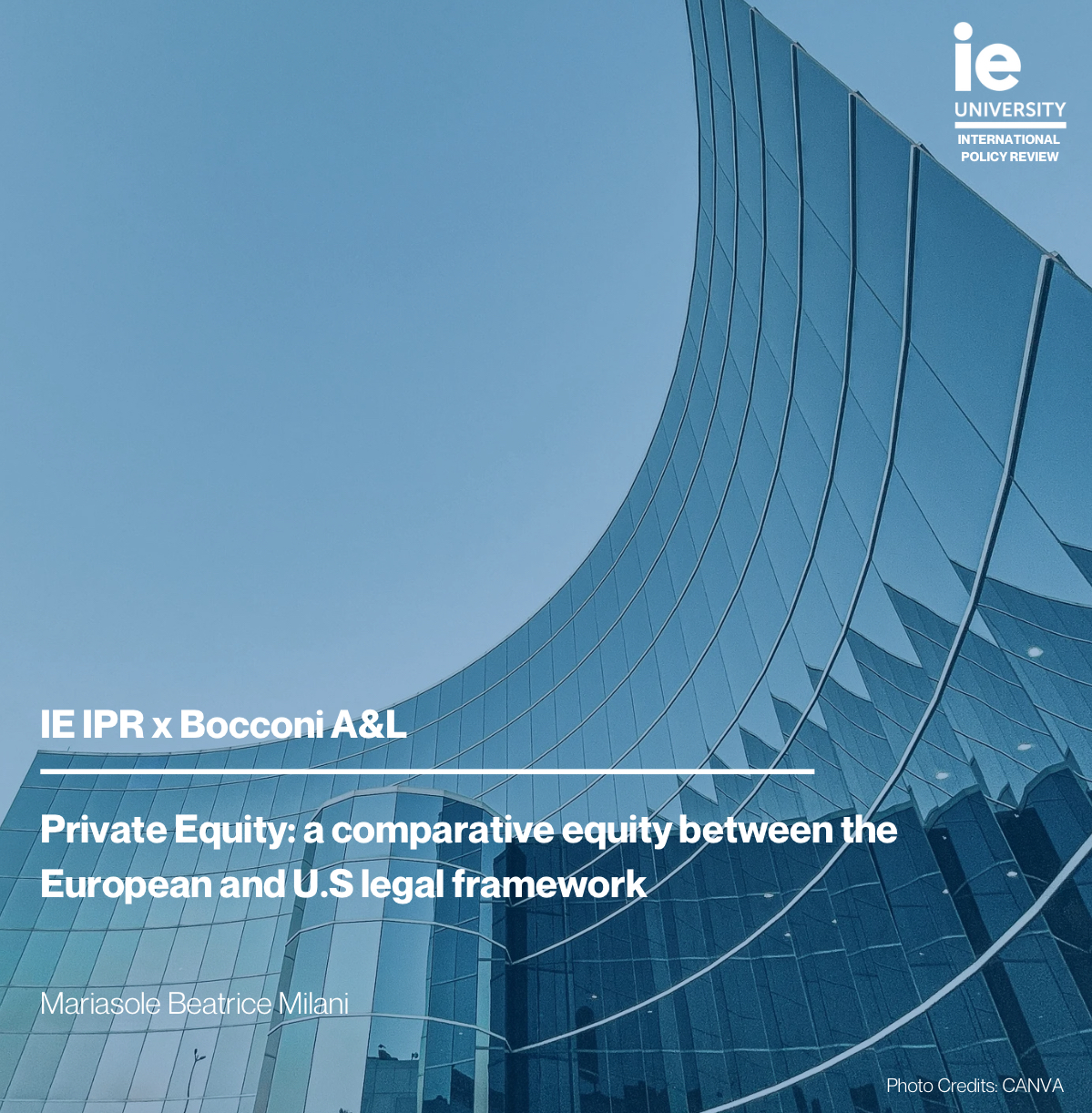
07 Jul Private Equity: a comparative equity between the European and U.S legal framework
Mariasole Beatrice Milani
mail: mariasole.milani@studbocconi.it
Abstract
Private equity (PE) markets have witnessed rapid growth over the past two decades, playing a pivotal role in corporate finance, innovation, and economic restructuring. Private equity refers to highly leveraged merger and acquisition activity aimed at alternative assets with the involvement of specialised management assistance. The beneficial features of PE consist in the creation of job opportunities and contribution to economic growth, for it usually transforms under-performing companies to capital-efficient and profit-generating businesses. However, its long-term character, high leverage investments and the risk of financial distress, market sensitivity and other factors define PE’s high level of risk, which oftentimes calls for a higher level of regulation, in order to protect single investors and the market itself. In front of the increasingly broad horizon private equity markets are nestled in, regulatory frameworks in major financial jurisdictions have adapted to the intrinsic risks of the industry; in this perspective, this paper elaborates a comparative analysis of private equity regulation in the U.S. and the EU, apt to focus on legal structures, investors safeguards, registration and reporting requirements, and the management of systemic risk. Additionally, a focus on the Italian jurisdiction will be delivered, for it represents the direct consequences of the AIFM Directive. Generally, the analysis highlights philosophical and operational divergences between the two jurisdictions, while also identifying the gaps and inefficiencies left by the different jurisdictions, with the aim of filling them through a comparative enquiry apt to find solutions across the aforementioned legal systems.
READ THE FULL ARTICLE HERE

Sorry, the comment form is closed at this time.